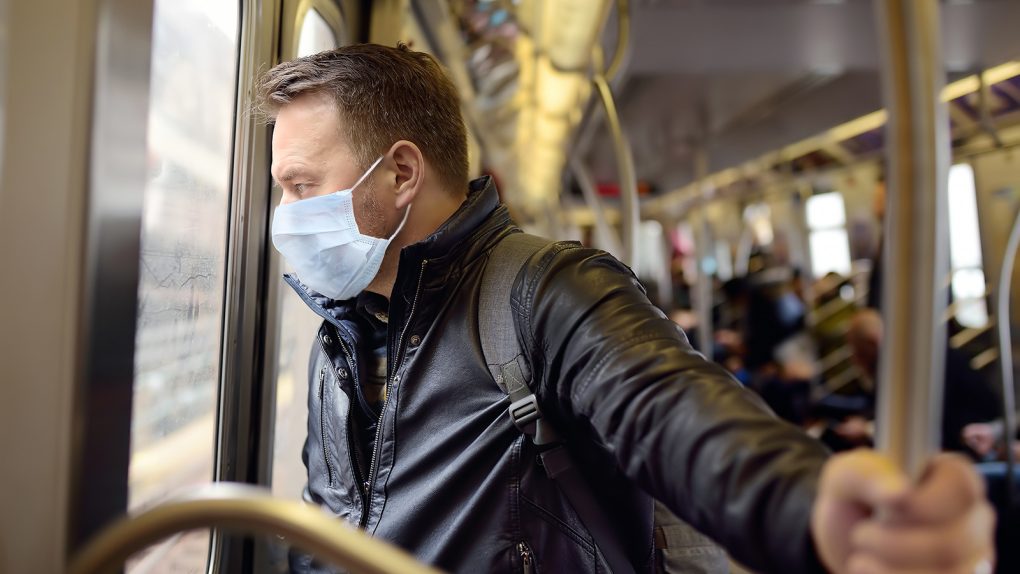- A new study says asymptomatic coronavirus spread might far more rare than most experts believe — a new study says the more severe the illness, the more likely it is for a COVID-19 patient to infect others.
- The news still wouldn’t be as good as it might seem since other studies have confirmed that COVID-19 transmission happens before the onset of symptoms.
- Presymptomatic patients can infect other people before developing symptoms themselves, which is why masks, social distancing, and hand washing are crucial.
The novel coronavirus has now infected more than 25.5 million people that we know of. These are all confirmed COVID-19 cases, though the real number is likely much higher. Plenty of people get the virus and never show any symptoms — or they don’t get tested. That’s why it’s critical to observe safety measures that health officials advise around the world, including social distancing, the frequent washing of hands, and of course face masks. The biggest worry health officials have is that asymptomatic transmission of COVID-19 may be driving outbreaks. Silent spreaders who have no idea they’re infected, or who think they can’t harm others, might pass the virus to other people. There has been plenty of debate on whether true asymptomatics can spread the virus, and there are numerous studies that have shown people who never have symptoms do reproduce the virus as their bodies fight the infection. Other studies show that asymptomatic people can spread the disease as well, like the recent study from South Korea that showed asymptomatic transmission is possible in an airplane despite precautions.
But, again, true asymptomatic transmission remains a topic that needs more research for a better management of the pandemic. And a new study indicates that the asymptomatic COVID-19 spread may be rarer than we think.
Researchers from Southern Medical University in Guangzhou penned a study in Annals of Internal Medicine (via Just The News) that says asymptomatic transmission is rare. The researchers studied the “secondary attack rate” for various groups of COVID-19 infections. That’s the likelihood of a person spreading the illness to their immediate contacts. They found that patients who experienced a more severe case of COVID-19 were more likely to infect their close contacts than less severe cases. “Asymptomatic cases were least likely to infect their close contacts,” the researchers found.
The study also notes that the risk of transmission via public transportation and healthcare is lower than in households. That’s because people are less likely to wear masks at home, whereas masks are mandatory in many public settings. That’s a great detail that should convince more elected officials to push mask mandates in communities where the virus is still prevalent.
This seems to be great news, as the study included a large number of people. Some 3,410 close contacts of 391 index cases were observed for nearly two months early in the pandemic. “Our results showed that patients with COVID-19 who had more severe symptoms had a higher transmission capacity, whereas transmission capacity from asymptomatic cases was limited,” the researchers write. “This supports the view of the World Health Organization (WHO) that asymptomatic cases were not the major drivers of the overall epidemic dynamics.”
“This mechanism may be that COVID-19 cases with more severe symptoms might carry a higher viral load of SARS-CoV-2 and thus have greater transmission capacity,” they said. And here comes the first major limitation of the study. The researchers may have observed a different strain of the virus than the one that’s wreaking havoc around the world right now. The virus infected far more people in Europe and the Americas than it did in China, and China’s suspected underreporting of cases might only be part of the reason why. Some researchers believe that a key coronavirus mutation outside of China made the virus stronger and more infectious, though it isn’t any deadlier than before. That’s the D614G mutation that’s now making a return to Asia.
Secondly, while the study does align with the view of the WHO that asymptomatic cases are not the primary drivers of the illness, the organization made a clear distinction on the matter a few weeks ago in a COVID-19 transmission update. The WHO said that persons without symptoms can infect other people, dividing people who do not experience COVID-19 symptoms into two categories. We’re looking at truly asymptomatics who never exhibit any COVID-19 signs and can only be diagnosed via a PRC test, and a presymptomatic people, who can spread the disease before the onset of symptoms.
Early data from China suggested that people without symptoms could infect others. To better understand the role of transmission from infected people without symptoms, it is important to distinguish between transmission from people who are infected who never develop symptoms (asymptomatic transmission) and transmission from people who are infected but have not developed symptoms yet (presymptomatic transmission). This distinction is important when developing public health strategies to control transmission.
The same update notes that the extent of truly asymptomatic spread in the community remains unknown, and it details other studies that looked at asymptomatic and presymptomatic transmission. The list includes a modeling study that estimated up to 44% of transmission might have occurred in presymptomatic people just before symptoms appeared.
Put differently, if you think or know you’ve been infected but you’re not showing symptoms, you can’t say for certain whether you’re healthy, asymptomatic, or presymptomatic. Only a PCR test and time will tell the whole story. Because symptoms can still appear later during an infection, it’s important to isolate yourself and observe safety measures even when you’re not showing any symptoms.








